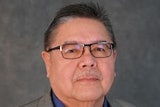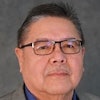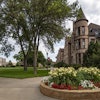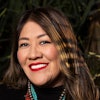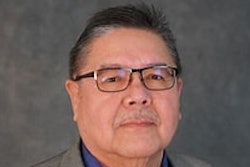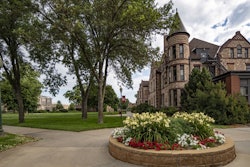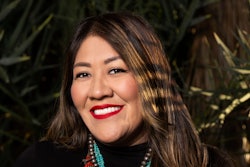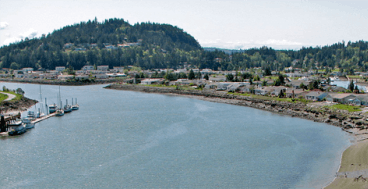
“You used to be able to predict things about the weather, but you can’t anymore,” says Linda Kruger, a research assistant at the Pacific Northwest Research Station, who has been interviewing several tribal communities about climate change issues in the last few months. “Berry crops are drying out, and there are fewer salmon in the streams because the water level has decreased,” notes Kruger of observances in Alaska.
Indeed, Dr. Jamie Donatuto, an environmental health analyst at the Swinomish Indian Tribal Community’s Office of Planning, says more American Indian tribes are becoming active in handling climate change issues. In conjunction with the University of Oregon, PNW is helping communities better understand these issues and providing resources through the Tribal Climate Change Project, a unique initiative that was established in 2009. There are many resources out there, says Kruger, but what makes the Tribal Climate Change Project different is that it is about tribes and climate change while bringing together representatives from the government and native communities.
“There’s a real strong connection between trying to understand tribal needs and lessons learned from what the tribes are doing and connecting that with government agency programs,” says Kruger, whose PNW provided initial funding and has recently recommitted to keeping the program going for two more years with a $50,000 grant.
Specifically, the Tribal Climate Change Program understands the needs and opportunities for tribes in dealing with climate change issues, examines government-to-government relationships in this context and explores the role of traditional knowledge in climate change study, assessments and plans, explains Kathy Lynn, an adjunct researcher in the school’s Environmental Studies Program and coordinator of the project.
“I think it provides an opportunity for a facilitated conversation,” says Kruger. “It makes a connection between people and government agency people who are doing research or have management programs.”
A key part of the initiative is information sharing, says Lynn. A climate change network that offers news on grants and the development of project resources, a listing of tribal profiles delineating more than a dozen tribal efforts that are underway and the development of resources and publications for tribes all fall into this category of serving as a forum. The Tribal Climate Change Project’s annual conference, tentatively scheduled for next fall, has also been a facilitator in providing information and exchange. Students, faculty and tribal community members congregate at a keynote speech, poster presentations, discussions and many other activities as part of the University of Oregon’s Climate Change Research Symposium.
“Climate change doesn’t respect treaties or reservation boundaries,” says Lynn. “There have to be ways to retain what limited access tribes have left through cultural resources. “
According to Donatuto, climate change has been affecting health, traditional food sources — i.e. native plants, animals and seafood — water availability and quality, ceremonial practices and customs and environmental health vectors.
Another group profiled by the project, the North Pacific Landscape Conservation Cooperative and the Northwest Climate Science Center, is funding the gathering of Traditional Ecological Knowledge among First Native and Alaska Native communities to eventually weave it into resource management. This cultural element, along with examining government relationships, is integral to the Tribal Climate Change Project’s mission.
A 2008 report studied the effects of the Northwest Forest Plan, a series of federal policies and guidelines governing land use on federal lands in the Pacific Northwest and federal-tribal relationships, finding that between treaty rights and land designations, conflicts can arise in management plans and activities. In addition, there were concerns about the plan’s effect on hunting and gathering sites and access to cultural sites. Funding shortfalls have affected treaty resources and treaty rights.
“We’re already seeing impact from environmental regulations and existing stressors,” says Lynn. Under federal delegation of authority, tribes are empowered to administer programs for protection of water and air quality and receive funding support from the federal government for the same.
“The federal government has a significant trust responsibility to tribes to provide support for addressing these increasing impacts,” says Donatuto.
While the study revealed significant shortcomings and issues, it served as an impetus for change as the Tribal Climate Change Project soon came about.
“It came out of a specific project in tribal engagement in natural resource management,” says Lynn, who was involved in the report.
Many tribes like the Swinomish are taking on their own studies. One, for example, is examining the community’s perspectives on climate change effects and on the tribe’s ability to address and respond to issues.
“It has also engaged the community on these issues and generated greater awareness and involvement by the community,” says Donatuto.
Greater self-awareness is also part of the South Central Climate Science Center’s work with several local tribes, as Paulette Blanchard, a master’s candidate at Oklahoma University, has organized workshops and brought together Native filmmakers to come up with ways to document their climate change challenges and experiences.
“I think more tribes are becoming more aware of it as an issue, and they’re seeing more evidence of it in their surroundings,” says Kruger.
These sorts of events are helpful to pair with scientific information, like that provided by the Tribal Climate Change Project, to inform the community what the impacts and expectations are for the future, says Donatuto.
“The boundaries are human boundaries that we put on a map, but plants and animals cross,” says Kruger. “We need to look at the bigger picture to see what is happening on the tribal lands and the government lands.”
